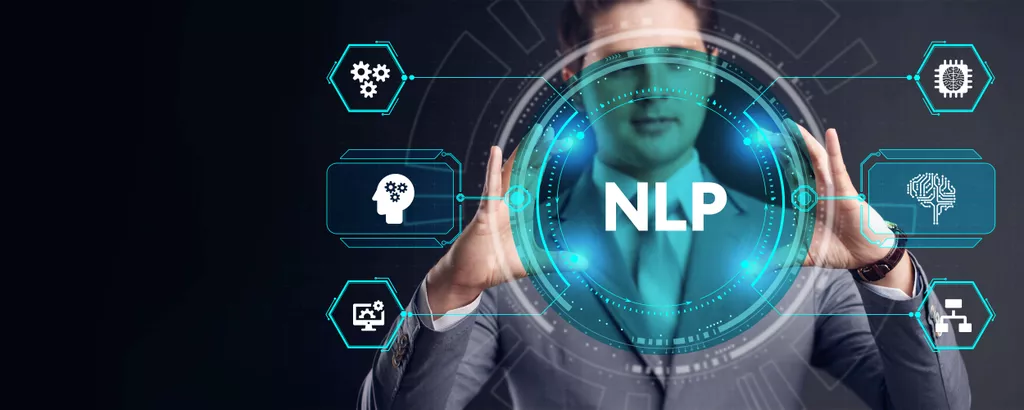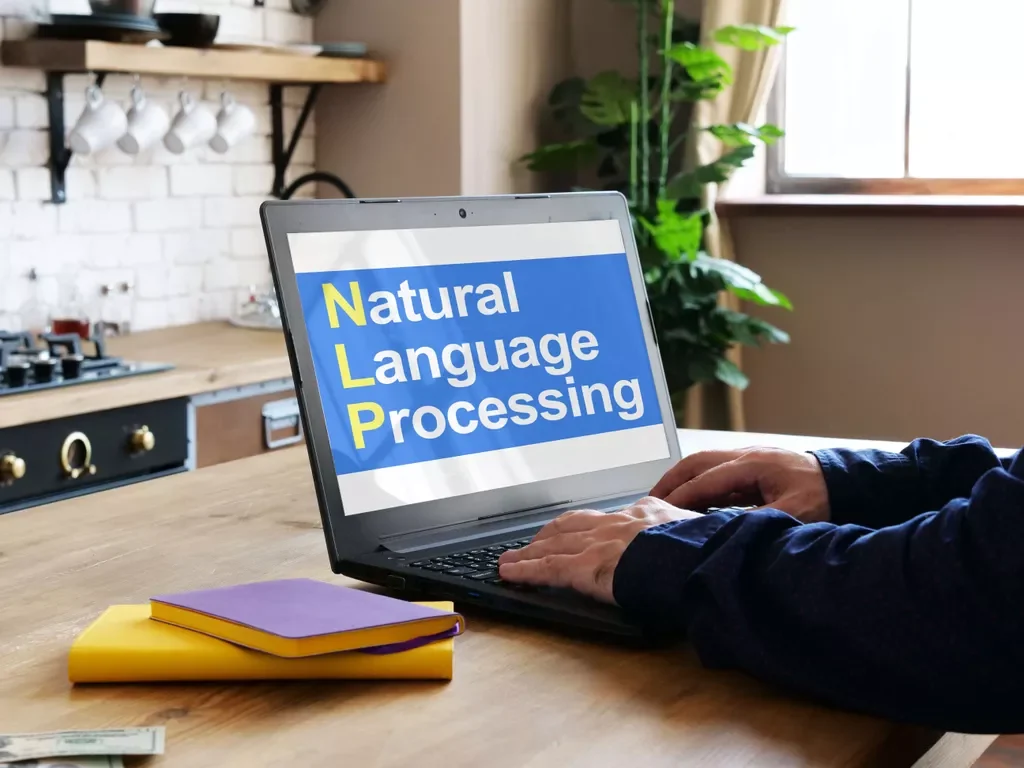Natural language processing (NLP) is a critical branch of artificial intelligence. NLP facilitates the communication between humans and computers. However, it’s sometimes difficult to teach the machine to understand the meaning of a sentence or text. That’s when semantic analysis is supposed to help. Keep reading the article to learn why semantic NLP is so important.
What is semantic analysis in Natural Language Processing?
We interact with each other by using speech, text, or other means of communication. Typically, these examples are called natural language. If we want computers to understand our natural language, we need to apply natural language processing.
Natural language processing is a way of manipulating the speech or text produced by humans through artificial intelligence. The goal is to ensure computers understand texts or speech. Thanks to NLP, the interaction between us and computers is much easier and more enjoyable.
Every human language typically has many meanings apart from the obvious meanings of words. Some languages have words with several, sometimes dozens of, meanings. Moreover, a word, phrase, or entire sentence may have different connotations and tones. It explains why it’s so difficult for machines to understand the meaning of a text sample.
However, people came up with a solution that helps develop NLP — semantic analysis.
Semantic analysis is a subfield of natural language processing. It helps machines to recognize and interpret the context of any text sample. It also aims to teach the machine to understand the emotions hidden in the sentence.
As a result, the software can extract critical information. That way, machines almost reach human-level accuracy in interpreting speech. Some typical areas of use of semantic analysis include:
- machine text translations;
- chatbots;
- search engines;
- text analytics.
Keep reading the article to figure out how semantic analysis works and why it is critical to natural language processing.
How does semantic analysis work?
Semantics NLP relies heavily on lexical analysis. The lexical semantics branch is a study that focuses on the meaning of every word. The semantic analysis identifies the relation between lexical items. Some of these relations are critical to understanding the meaning of the word. Here are these relations:
- Homonymy. It studies words with the same spelling or textual form but with different and unconnected meanings.
- Hyponymy. It focuses on the connection between a generic word and its occurrences. The generic word is a hypernym, while occurrences are hyponyms.
- Synonymy. It shows the relations between two or several lexical elements which possess different forms and are pronounced differently but represent the same or similar meanings.
- Antonymy. It reflects the relations between two or more lexical items, including semantic components symmetric to an axis.
- Polysemy. It’s a term or phrase that has a different but comparable meaning. In simple words, typical polysemy phrases have the same spelling but various and related meanings.
- Meronomy (or partonomy). It’s a type of hierarchy that focuses on part-whole relationships.
When semantic analysis examines the different meanings of words, it provides a clear understanding of words within a specific context. Here’s the simplest example of semantic analysis in NLP:
- The man was eating an apple. The main focus here is on a man who is eating an apple. So, the apple in this context is a fruit.
- The man went to Apple. In this case, Apple is a store, not a fruit.
Thanks to semantic analysis within the natural language processing branch, machines understand us better. In comparison, machine learning ensures that machines keep learning new meanings from context and show better results in the future.
Meaning representation
Semantics NLP can reflect the meaning of a given sentence. The semantic analysis uses various processes and techniques to achieve the result. Overall, the mentioned area of semantics NLP helps in completing critical tasks, like these:
- Link linguistic elements within a sentence to the non-linguistic parts.
- Represent unambiguous data at a lexical level.
- Verify whether the data is correct.
Now let’s check what processes data scientists use to teach the machine to understand a sentence or message.

Semantic analysis processes
Semantic analysis is critical to NLP given that its processes help identify different meanings of words. Moreover, these processes help the machine understand the meaning of entire sentences and texts. There are two typical processes of semantics NLP:
- Word sense disambiguation.
- Relationship extraction.
Let’s learn in detail about each process.
Word sense disambiguation
The term describes an automatic process of identifying the context of any word. So, the process aims at analyzing a text sample to learn about the meaning of the word.
In natural language(used by people), one word often has several meanings. For instance, the word “cloud” may refer to a meteorology term, but it could also refer to computing.
The computer’s task is to understand the word in a specific context and choose the best meaning. Computers use sense disambiguation to complete the task.
Relationship extraction
The sentence often has several entities (words or phrases) related to each other. The relationship extraction term describes the process of extracting the semantic relationship between these entities.
Suppose the machine has to analyze the sentence “I’m drinking coffee.” The sentence consists of two entities, “I” and “coffee,” and the relationship between these two entities is the word “drink.”
Semantic analysis techniques
Semantics NLP uses two techniques, depending on the type of information a data scientist needs to extract and analyze. These techniques include:
- semantic classifiers;
- semantic extractors.
Let’s learn more about each technique.
Semantic classifiers
Semantic classifiers include text classification models that assign specific predefined categories to the sample text. These classifications are:
- topic classification;
- sentiment analysis;
- intent classification.
Each method uses different techniques and has a different task.
Topic classification
It’s a method used to process any text and categorize it according to various predefined categories. The decision to assign the text to a certain category depends on the text’s content.
Suppose the business sells and delivers books. The automated customer support software should differentiate between such problems as delivery questions and payment issues. As a result, the team reacts faster to customer requests. In some cases, an AI-powered chatbot may redirect the customer to a support team member to resolve the issue faster.
Sentiment analysis
The method focuses on analyzing the hidden meaning of the word (its connotation or sentiment). As mentioned, different words have different meanings. In some cases, different words have different connotations. It could be positive, negative, or neutral.
The method is very helpful since it estimates the urgency of someone’s request. If a request is negative, the company may want to react faster to solve the issue and save its reputation.
Suppose the company has a social media page. Someone left a comment saying, “The company’s delivery is as fast as a snail.” If the NLP fails to analyze the negative meaning of the sentence, it may consider the comparison to be positive since the words “fast” and “delivery” may indicate a false statement.
Intent classification
The method relies on interpreting all sample texts based on a customer’s intent. Your company’s clients may be interested in using your services or buying products. On the other hand, they may be opposed to using your company’s services. Based on this knowledge, you can directly reach your target audience. Logically, people interested in buying your services or goods make your target audience.
Semantic extractors
As in the previous example, semantic extraction models use different techniques. These are as follows:
- keyword extraction;
- entity extraction.
Let’s check these techniques in detail.
Keyword extraction
The method relies on analyzing various keywords in the body of a text sample. The technique is used to analyze various keywords and their meanings. The word may have a negative or positive meaning. The most used word topics should show the intent of the text so that the machine can interpret the client’s intent.
Entity extraction
The method focuses on extracting different entities within the text. These entities are people, names, names of companies, etc. The technique helps improve the customer support or delivery systems since machines can extract customer names, locations, addresses, etc. Thus, the company facilitates the order completion process, so clients don’t have to spend a lot of time filling out various documents.
The importance of semantic analysis in NLP
Many business owners struggle to use language data to improve their companies properly. Unstructured data cause the problem — companies often fail to analyze it. It’s an especially huge problem when developing projects focused on language-intensive processes.
Every comment about the company or its services/products may be valuable to the business. However, it’s important to detect and analyze these comments. That’s when semantics analysis comes in handy. Yes, basic NLP can identify words, but it can’t interpret the meaning of entire sentences and texts without semantic analysis.
